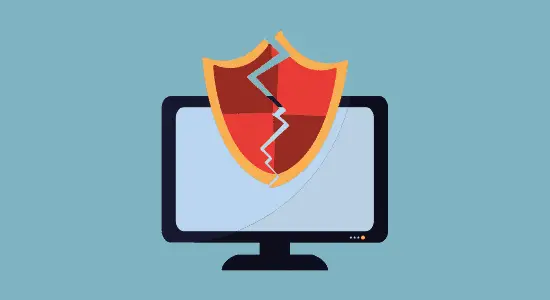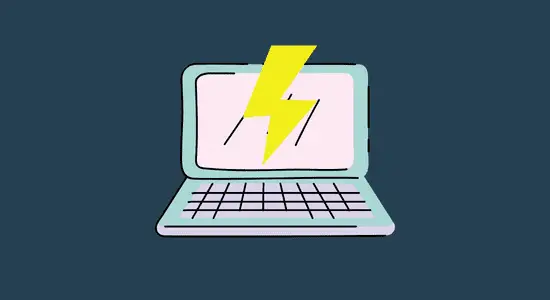Table of Contents Show
Malware and viruses are a common problem for PC users, especially those running windows 10. Are you having trouble removing malware from your computer? Don’t worry, we have the solution. Our free malware removal for Windows 10 tips will help get rid of any unwanted programs and files that are causing problems. How do I remove Windows Defender and Malware Protection?
What is Malware?
Malware is short for malicious software. It’s any type of program that infects your computer and takes advantage of it to do harm, like steal personal information or disable antivirus programs. Malware can also disguise itself as legitimate programs, making it very hard for you to know what’s causing your problems.
What is Windows Defender? Windows Defender is a security feature in Windows 10 that helps you stay safe from viruses, malware, and other types of malicious software. It scans files as they are downloaded and blocks suspicious downloads in the future.
What is a Rootkit? A rootkit is a type of malware designed to hide its existence from the operating system and other security software. It’s installed on a computer in a way that makes it difficult or impossible for the operating system to detect or remove.
Types of malware and Best free tools
Malware can be classified into several categories based on its effects. The most common types of malwares are viruses, Trojans, worms and ransomware.
- Viruses are self-replicating programs that attach themselves to other files or programs and spread to other computers.
- Trojans are malicious programs that masquerade as legitimate software but perform harmful actions when run.
Worms are self-replicating programs that spread through computer networks. - Ransomware is a type of malware that locks users’ files or displays a message demanding payment in order to unlock them.
All of these types of malwares can cause serious damage to your computer or data if not detected and removed promptly. Antivirus software is essential for protecting your computer from these threats. The following security software programs are the top free malware removal for windows 10 that can detect and remove malware from your computer in order of effectiveness.
1. Microsoft Security Essentials:

Microsoft security essential is a security software suite developed by Microsoft that provides basic antivirus protection and performance optimization services. It is designed to run in the background and has a simple user interface. It is recommended that you update your current security software suite with this one, as it is currently considered the most effective antivirus program in the Windows marketplace.
2. Avast! Free Antivirus Avast!

Avast is a popular antivirus software program distributed by Avast Software, which has its headquarters in the Czech Republic. It is very effective at detecting and removing viruses, and it also provides real-time protection against spyware and other malicious programs. The program also provides free and easy-to-use malware scanning, file recovery and other important features.
3. Norton Antivirus

Norton is a popular antivirus software program that has been in use since the early 1990s. It has two different programs: Norton Internet Security and Norton 360. This is a paid version of Norton that offers very good protection against spyware, malware and viruses. The latter is probably the best antivirus solution it has ever had.
4. McAfee Antivirus

McAfee is a well-known antivirus service that has been in existence over 20 years. It has two different versions, the free McAfee Personal Security and the paid McAfee Internet Security. The latter provides real-time protection against spyware and other malicious programs.
5. Kaspersky antivirus

Kaspersky is a popular antivirus service that provides excellent protection against spyware, malware and viruses. It is available in two different versions, the free Kaspersky Internet Security and the paid Kaspersky Total Security.
6. AVG Anti-Virus

AVG is a German company that offers antivirus and antispyware software. Its free AVG Internet Security (AVG Anti-Virus) has been around for a long time, and it has earned good reviews from users.
7. Panda Antivirus

Panda is a Chinese antivirus and antispyware company. Its free version, Panda Internet Security, has been around for quite some time as well. It has earned good reviews from users.
Methods to remove malware
Malicious software, or malware, can cause serious harm to a computer. The effects of malware can range from deleting files to taking over the entire system. There are many different types of malwares, and they are constantly changing and evolving. In order to protect your computer from malware, it is important to have a removal tool installed. There are both manual and automatic removal methods available. Manual removal is the most common, but it can be very time consuming. For this reason, many people turn to automatic removal methods.
Here are four of the best methods to remove malware:
1. Use an anti-malware program.
2. Remove infected files and folders using standard Windows tools.
3. Use a bootable antivirus disc.
4. Use a malware removal tool from a trusted source.
While these are the best free malware removal for Windows 10, it is important to note that many of these programs can be quite intrusive and may slow down your computer. It is always best to use a tool from a trusted source such as MalwareBytes, SpyHunter, and RogueKiller. These programs scan your computer for malware and then remove any detected threats automatically. They are very quick and effective at removing malware.
How to properly use a malware removal tool?
If you think you may have malware on your computer, you can use a malware removal tool to scan and remove the malicious software. There are a number of different malware removal tools available, both free and paid. Some popular malware removal tools include Malwarebytes Anti-Malware, Spybot Search & Destroy, and Microsoft Security Essentials.
To use a malware removal tool:
1. Download and install the tool on your computer.
2. Run the tool and scan your computer for malware.
3. If malware is detected, follow the on-screen instructions to remove it.
4. Once the tool has finished scanning your computer, you can delete any malicious files that were found.
Free vs Paid Malware Software?
Nevertheless, there are still best free malware removal for windows 10 including 7/8 and 11. When your computer is infected with malware, the antivirus software you have installed can help get rid of the infection. However, some people are wondering if they should go for a free or paid malware software.
Paid malware software generally offers better protection against viruses and other types of malwares, while free malware software may not offer the same protection. Additionally, paid malware software typically has more features than free malware software. However, free malware software is a good option for people who are on a budget.
There is several anti-malware software that is free to use for 30 days. After the 30 days are over, you have to pay a small fee for the software. Malwarebytes Anti-Malware Premium is a premium anti-malware software that is intended to be used as an all-inclusive protection against malware.
The software can protect your computer from viruses, spyware, Trojans, and other types of malwares. Choosing paid malware software does not mean you have to sign a long-term contract. You can easily cancel the subscription if you are unhappy with the product.
What is the difference between malware removal and antivirus software?
Malware removal software is a specific type of software that is used to remove malware from a computer system. Antivirus software, on the other hand, is a type of software that is used to protect a computer system from viruses and other types of malwares.
Antivirus software is typically included as part of a larger security suite that also includes features such as firewalls and anti-spyware protection. What is the difference between malware and virus? The terms “malware” and “virus” are often used interchangeably.
However, there are some important differences. A virus can replicate and spread, while malware cannot. Most viruses are malicious software that is intended to damage a computer system. However, some viruses are benign and simply replicate themselves.
Malware is a broader term that includes all types of software that are unwanted or harmful. It can be a simple keylogger, which records all of the keystrokes that are typed on a computer. It can also be spyware, which installs itself on a computer and collects information about the user and the Internet usage of other users.
Can malware steal passwords?
Malware can steal passwords, and it’s a problem that is only going to get worse and that’s why companies are developing free malware removal for Windows 10 including 7/8 and 11 to keep the internet safe for all, but you can use most of the tools for free. In the past, malware has only been able to steal login credentials, but now it can also steal passwords and other sensitive information like credit card numbers.
This means that even if you’re careful about what you type into your browser, there’s a chance that malware could steal your password. If this happens, do not enter your password ever again. It’s also a good idea to get a new one and change it when you log into a website that you access frequently. This will prevent a successful password theft.
What is phishing? Phishing occurs when you receive an email or other electronic message that appears to be from a trusted company or individual but actually contains malware. This type of attack is called a phishing attack. The most common way that these attacks are carried out is through email messages.
How long does the malware removal for windows 10 service take?
Windows 10 is a latest version of Microsoft Operating System. It comes with new features and improvements over previous versions. One such improvement is malware removal. Windows 10 provides a malware removal service which removes malicious files, registry entries, and processes from your computer. However, the malware removal service may take some time to remove all the malicious files from your computer.
Some antivirus programs can remove malware quickly, while others may take a little longer. How can I remove malware from my computer?
Because the amount of malware on the Internet is constantly growing and changing, there’s no one way to remove all malware. So, it’s important to have a diverse selection of tools at your disposal to help you clean up your computer. Here are some tools that you can use to remove malware: Spyware-removal tools, including AdAware and Spybot. Antivirus software, including Microsoft Antispyware, AVG Anti-Virus, or Norton Internet Security.
How to know if you have malware?
malware can be hard to recognize, but there are some key indicators that you may have it on your computer. Here are four of the most common signs that you may have malware on your device: experiencing sudden unexplained crashes, seeing strange or unexpected ads on websites you visit, experiencing unusual pop-ups or notifications, or having trouble connecting to the internet. If any of these problems are severe enough, it might be time to take action and remove the threat from your device.
The best way to prevention malware
How can I prevent my computer from downloading and installing software from unknown or suspicious websites?
There are several things you can do to protect yourself from downloading and installing malicious software. For starters, you should never download software from an unknown website. Also, you should never enter your personal information into a form on a web page that asks for it. You should always make sure the file is downloaded from a secure server.
You can also try to use a security tool called Internet Explorer Security Toolbar (IE) which is available from Microsoft. It protects your computer from downloading and installing malicious software by checking the websites you visit for a certain set of criteria.
Keep your computer up to date with the latest security patches, install an antivirus program, don’t open emails from unknown senders, be careful what you click on.
Conclusion
Follow the prevention tips and use a free malware removal for windows 10 as provided in this article program to protect your computer from infection. If you don’t want to take any chances, purchase a full-featured anti-malware program.












